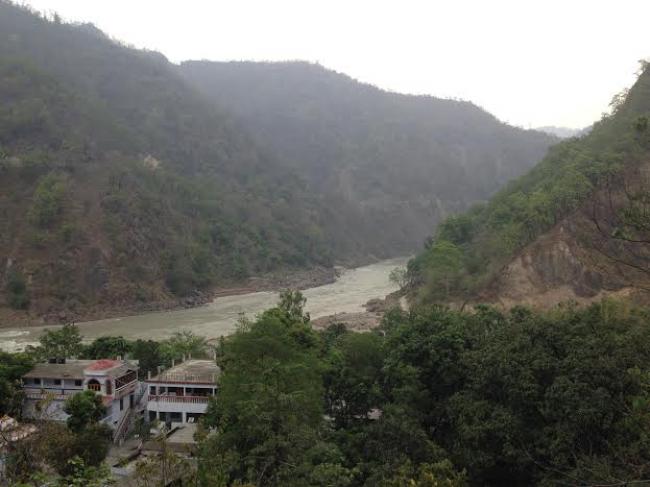21 Jun 2016, 07:16 am

Famine in Sub-Saharan Africa does not make for pleasant news, but fortunately it does not affect us directly. Neither do the rising deaths of the penguins in the Antartica. Closer home, some of the recent headlines also fail to evoke the desired reaction for the same reason:
Feb 17, 2016: ‘Chhattisgarh Govt. cancels tribal rights over forests to facilitate coal mining’
June 10, 2016: ‘After Bihar's Nilgai culling, HP announces plan to start culling Shimla's 2500 Monkeys’
Yet these stories have a vital link to our existence. They are all, in fact, pointers to a devastatingly challenging era when all debates on development versus conservation are to be about bitter survival. But where, increasingly, we stand to lose more than we gain, if we think only about ourselves.
And so, as Odisha’s resource-rich Sukinda valley coughs up lungful of polluted air today, Chhattisgarh will be left to lick its own deep wounds, perhaps never to be healed. After neelgais and monkeys, a far more severe vermin epidemic, from rodents to other venomous creatures, is likely to endanger our peace. Their natural habitats destroyed they will have no option but to invade the urban landscape; and in the absence of their natural predators, they shall necessarily proliferate, much to our agony.
These are issues that cannot be wished away. Their solutions though simple are not being deliberated upon with the urgency they should be, not because there is a lack of understanding about them but because they a little removed from the urban reality. Media too has not been able to keep aside its circulation arithmetic and assign enough space to this critical topic---Biodiversity.
.jpg) For instance we are all aware of how an average Indian today is exposed to more particulate matter than the average Chinese citizen. We are, however, not aware that India's carbon sink (anything absorbing more CO2 than it releases), crucial in the current need to reduce carbon dioxide from the air, has actually increased by 103 million tonnes to 7044 million tonnes in 2015, with the marginal increase in forest cover that it has seen over the last few years. Which is great news, but it is not enough to contain the vast imbalance in nature that has already set in.
For instance we are all aware of how an average Indian today is exposed to more particulate matter than the average Chinese citizen. We are, however, not aware that India's carbon sink (anything absorbing more CO2 than it releases), crucial in the current need to reduce carbon dioxide from the air, has actually increased by 103 million tonnes to 7044 million tonnes in 2015, with the marginal increase in forest cover that it has seen over the last few years. Which is great news, but it is not enough to contain the vast imbalance in nature that has already set in.It is indeed a blessing that India is one of the world's 17 ‘megadiverse’ countries with 200 eco regions. Though a rising percentage of flora and fauna are on the verge of extinction, mainstreaming biodiversity for conservation can still generate a sustainable livelihood for those who depend on the soil. It can also influence climate change dramatically. Beyond the rights of a few animals or that of a handful of people; or debates on the destiny of a river, a valley or a forest, flora or fauna, this is a holistic approach, intrinsically linked with sustainable national economy and that of our well-being.
The outcome of such conservation is phenomenal. According to the interim report of The Economics of Ecosystem and Biodiversity: India Initiative (TEEB-India, the value of sustainable harvesting of the ecosystem from one single district in Karnataka per hectare per year is a whopping Rs 252,696,.
‘Equitable sharing of benefits, emerging from the sustainable use of these ecosystems, is being seen an important goal to pursue today,’ claims Dr Amita Prasad Additional Secretary, Ministry of Environment, Forests and Climate Change (MoEFCC).
.jpg) The main function of the BMC has been to prepare People Biodiversity Registers (PBRs) in consultation with the local people. The register is to contain comprehensive information of the local resources, their medicinal and other usage associated with them, to help the locals come up with sustainable livelihood programmes around them. ‘So far 3000 PBRs in 17 states have been established,’ said Dr B Meenakumari, Chairperson NBA. Maximum of these are in MP and Kerala.
The main function of the BMC has been to prepare People Biodiversity Registers (PBRs) in consultation with the local people. The register is to contain comprehensive information of the local resources, their medicinal and other usage associated with them, to help the locals come up with sustainable livelihood programmes around them. ‘So far 3000 PBRs in 17 states have been established,’ said Dr B Meenakumari, Chairperson NBA. Maximum of these are in MP and Kerala.National, state and local level biodiversity funds have also been established for the conservation and promotion of these resources. All grants, loans and royalties received by the NBA shall accrue to theNational biodiversity fund (NBF). Similarly, all sums received by SBB will be part of State biodiversity fund. While the SBF shall be used for the management and conservation of heritage sites, compensating or rehabilitating any section of the people economically affected by notification, apart from conservation activities, the local biodiversity fund will be used to document and manage the local resources.
It shall be incumbent upon the State Governments to notify biodiversity heritage sites, with the help of local people, and apart from management and conservation, launch schemes for compensation and rehabilitation of affected people. Heritage sites are well defined areas that are unique, ecologically fragile terrestrial coastal and inland water and marine, having rich biodiversity.
Meanwhile, Biodiversity Finance Initiative (BIOFIN), a global partnership piloted in 31 countries, will build on the work done by the MoEFCC. It will determine the funds available and develop a resource mobilisation strategy. Of the 200 eco regions in India, the pilot initiative in India has begun in the Himalayans and the Western Ghats, two biodiversity hotspots..
The Access Benefit Sharing (ABS) strategy where the community stands to benefit from all its activities will need to be monitored and in the coming months hopefully more stories from the local communities will help us access the situation on ground. ‘India is ready to be audited’, announced Dr Amita Prasad
Meanwhile, we need to thank Rajasthan and its increasing forest cover for the reduction in Delhi’s dust haze this year. And that is as simply as it can be put. We need to embrace the web of life, woven by the diversity of animals and plants and fight this battle for all of us from now.
A prophecy of the Cree Indians: “When the last tree is cut down, the last fish eaten and the last stream poisoned, you will realise that you cannot eat money.”
(Just Earth News)
- Kolkata CP urges elderly to stay alert against digital scams at ‘Pronam’ interaction
- Sona Incubations, Salem picks 17 startups for Rs 11 Mn DST investment, grant
- Visva-Bharati University unveils a transformational roadmap under Vice-Chancellor Dr. Probir Kumar Ghosh
- Sona College of Technology hosts Think Salem 2025: To spur startup opportunity from Tier-2 Cities
- ACM India unveils National AI Olympiad 2026 to spot school talent for global AI stage
- Reject Macaulayan education, reclaim Indian values: H M Bangur’s big World Hindu Economic Forum pitch
- Sona College of Technology: Many academic, research and industry-linked advances in 2025
- Kolkata: ICCR hosts 10th anniversary celebration of Robir Kiran
- Sydney's Bondi Beach horror: Pakistani-origin man named as one of the key suspects
- ‘Abba Aur Main: Ek Anokhi Dastan’ — Urdu Translation of Neelima Dalmia’s Memoir Launched at New Delhi’s Jashn-e-Rekhta Festival
Lufthansa will mark its 100th anniversary in 2026, commemorating a century since the founding of the original “Luft Hansa” on January 6, 1926. The airline’s first flight followed shortly after, on April 6 of the same year, marking the beginning of what would become one of aviation’s most recognisable brands.
Tata Group-owned Air India on Tuesday announced a new, unilateral codeshare partnership with airBaltic, the flag carrier of Latvia, thus making the Baltic region more conveniently accessible for Air India customers.
Air India Express, India’s first international value carrier, has rolled out its monthly, ‘PayDay Sale’, offering special fares across its domestic and international network.





